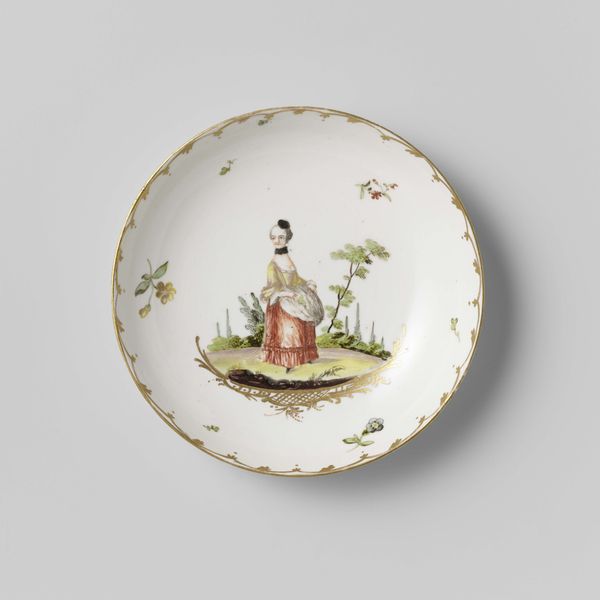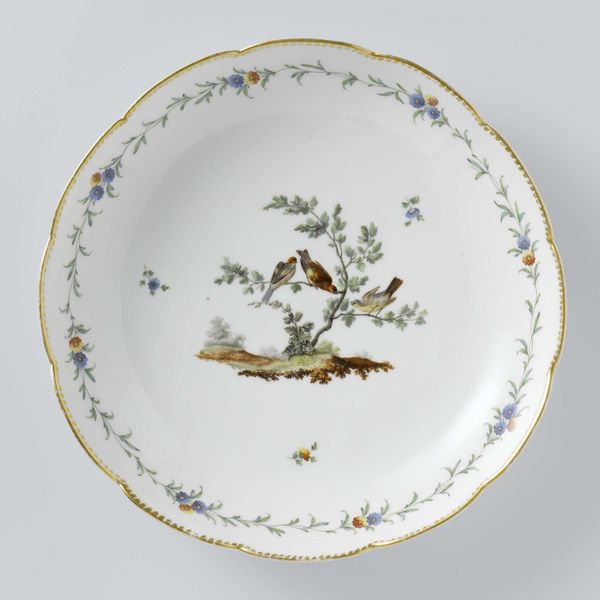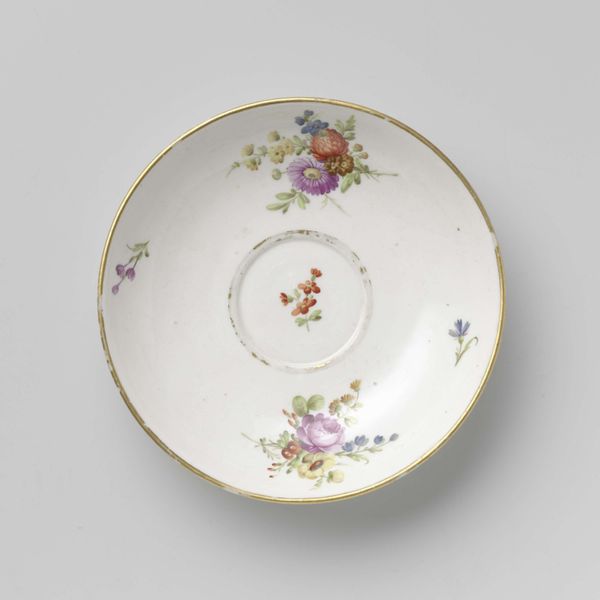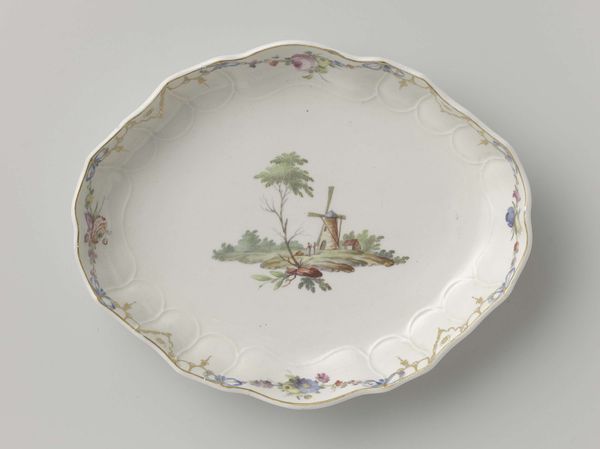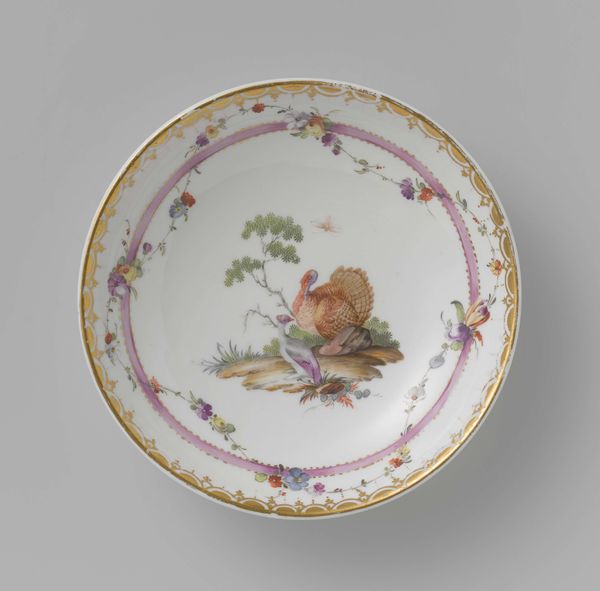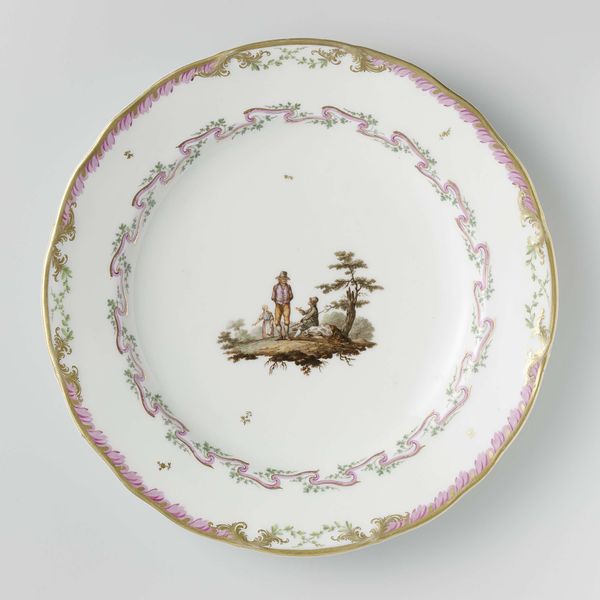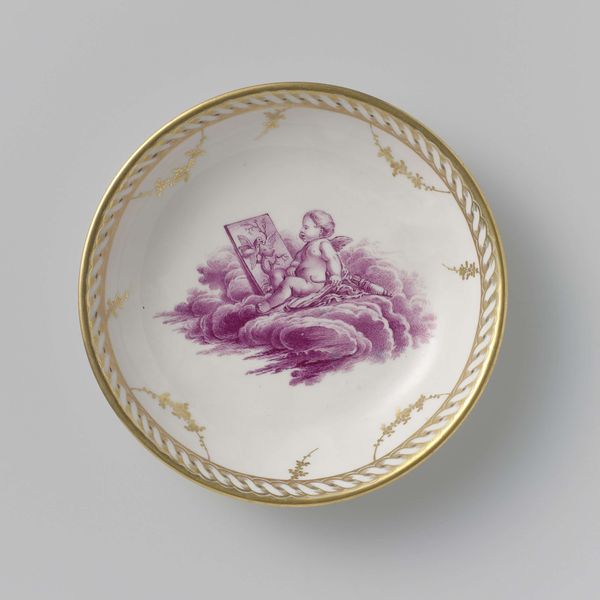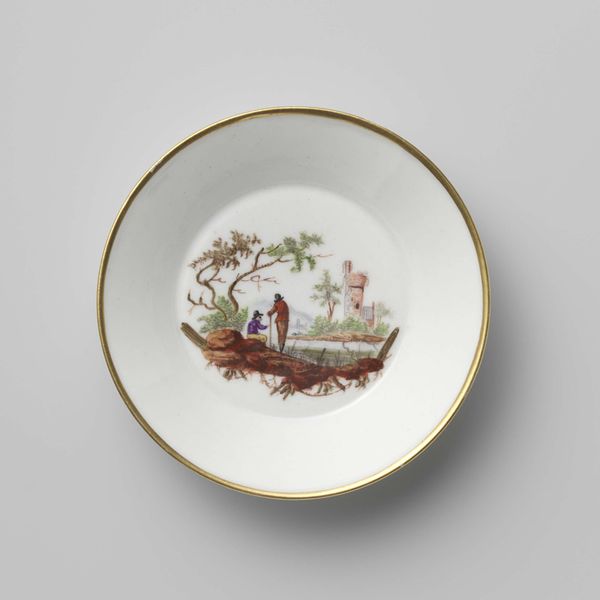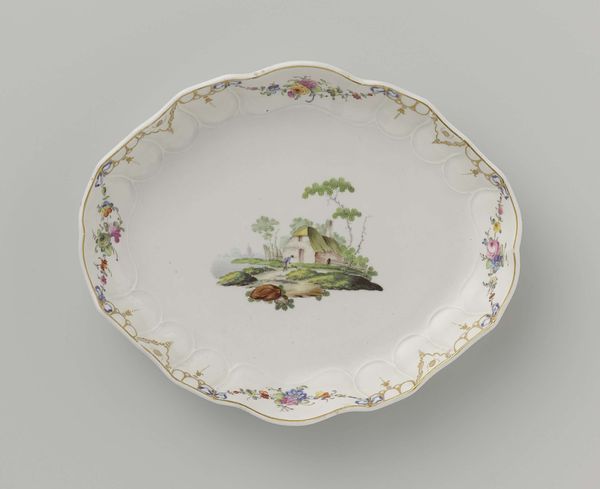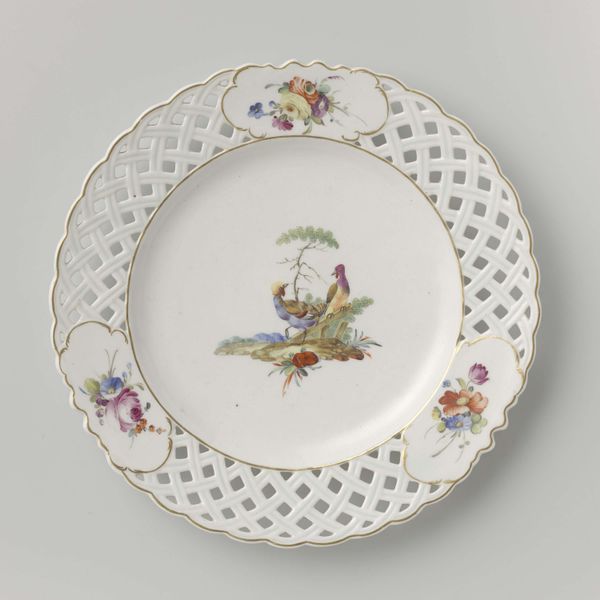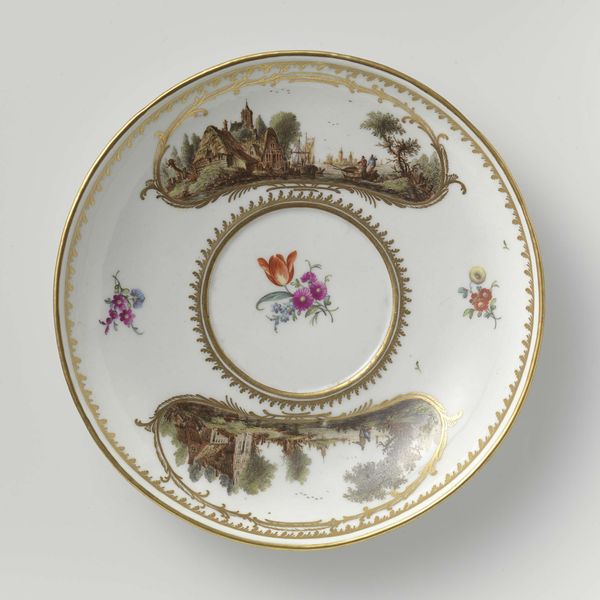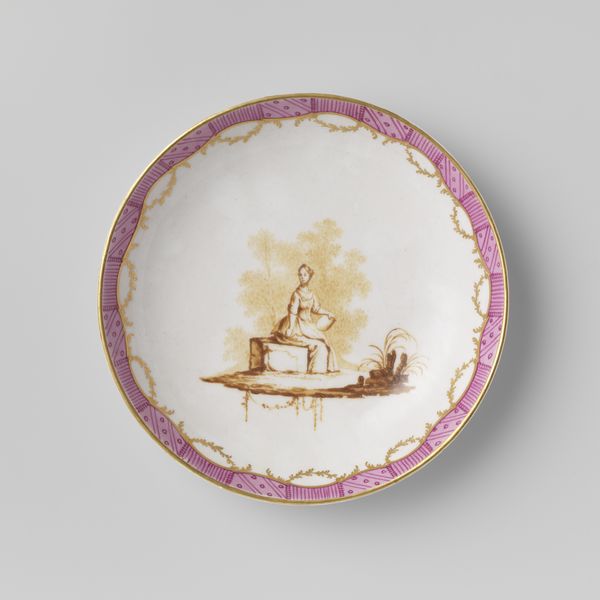
Teapot and milk jug, part of a tea service c. 1809 - 1814
0:00
0:00
koninklijkeporseleinfabriekdommerco
Rijksmuseum
ceramic, porcelain
#
landscape
#
ceramic
#
porcelain
#
decorative-art
Copyright: Rijks Museum: Open Domain
Curator: Here we have a refined porcelain teapot, crafted by Koninklijke Porseleinfabriek Dommer & Co. somewhere between 1809 and 1814. Notice the delicate landscape painting encircling its body. Editor: Immediately, I’m drawn to how utilitarian it appears, yet ornamented. There's a definite tension between the high gloss finish and the implied everyday use. The gold embellishments denote wealth, of course, but what can you tell us about this factory's process? Curator: It's a fascinating interplay, isn't it? The Dommer factory embraced Neoclassical forms, readily apparent here, along with finely detailed, picturesque scenes that spoke to the era’s burgeoning interest in the pastoral and sublime. The decoration invites visual pleasure, certainly. Editor: Quite. I'm curious, though, about the social context. Who would have commissioned such an item? It speaks of leisure and perhaps of a ritualized tea ceremony, involving servants, trade routes, and the availability of this imported material called porcelain. Was the factory attempting to appeal to nobility, or was it perhaps trying to produce work that was broadly accessible, and how might that be signaled to a potential customer? Curator: A question of class and display. The rising bourgeoisie, certainly. These pieces demonstrate refinement and cultural literacy, evidenced in the applied landscape imagery. One could decode it as a marker of status within a changing social order. The scene isn’t simply decorative, it is communicating belonging and aspiration. Editor: Right, and looking closely at the gilding and detailing…there is labor embedded here, often erased in traditional readings of decorative art. The production chain, the factory floor, the individual artists painstakingly hand-painting each scene; we lose that human connection, the embodied energy and skill in favor of an emphasis on form. Curator: I concede to that interpretation. Viewing it as solely decorative limits understanding; it's more productive to see how form, subject, and even material contribute to an intricate representation of 19th century Dutch society. The semiotics of its landscape for instance are incredibly powerful. Editor: Indeed, these objects serve as historical documents as much as artistic displays, bearing witness to both elite consumption and the hidden labor that sustained it. I feel a lot more educated than before looking closely at this seemingly unassuming artifact.
